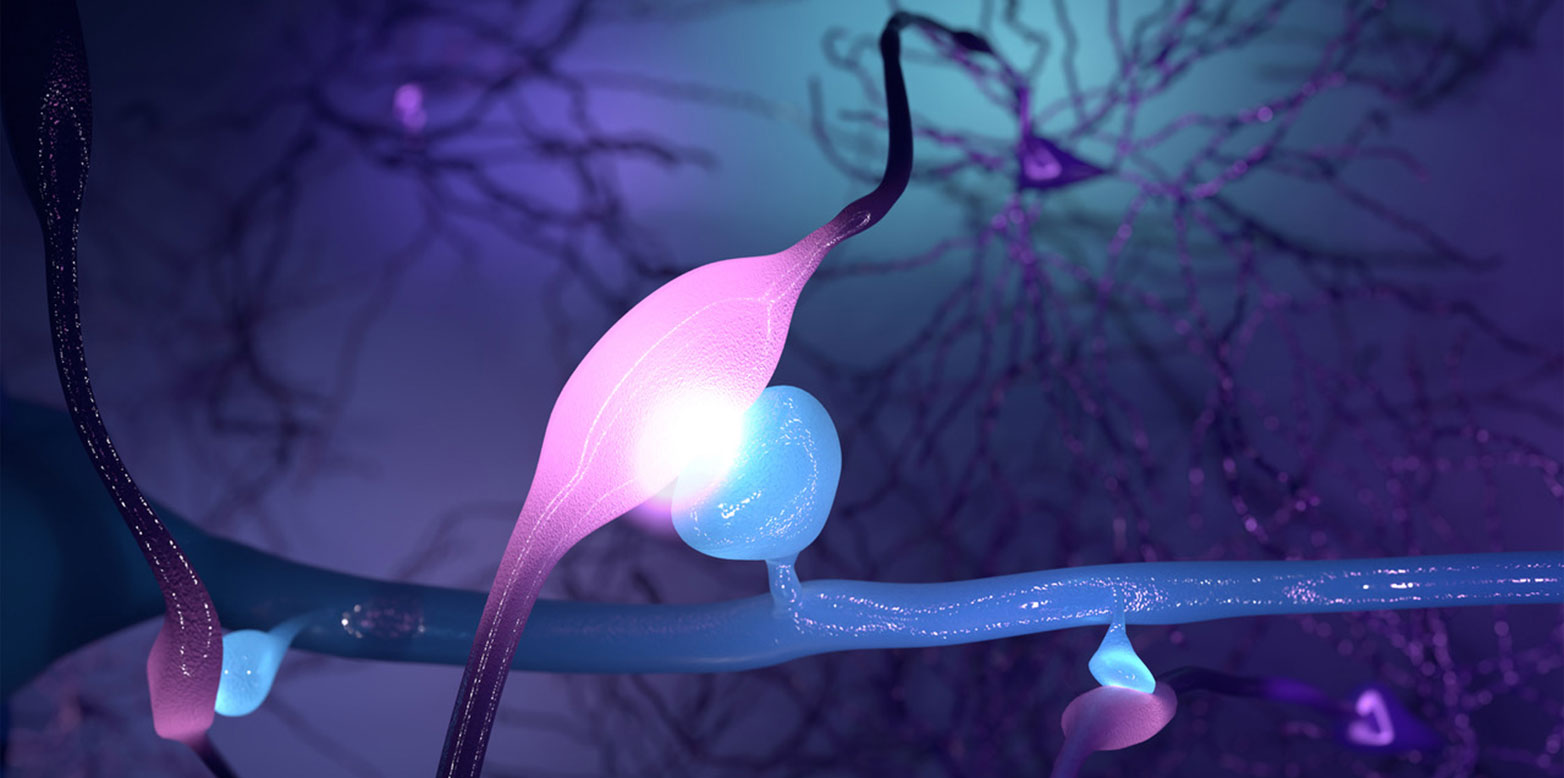Bigger synapses, stronger signals
Nerve cells communicate with one another via synapses. Neuroscientists at the University of Zurich and ETH Zurich have now found that these connections seem to be much more powerful than previously thought.
The neocortex is the part of the brain that humans use to process sensory impressions, store memories, give instructions to the muscles, and plan for the future. These computational processes are possible because each nerve cell is a highly complex miniature computer that communicates with around 10,000 other neurons. This communication happens via special connections called synapses.
The bigger the synapse, the stronger its signal
Researchers in Kevan Martin’s laboratory at the Institute of Neuroinformatics at the University of Zurich (UZH) and ETH Zurich have now shown for the first time that the size of synapses determines the strength of their information transmission. “Larger synapses lead to stronger electrical impulses. Finding this relationship closes a key knowledge gap in neuroscience” explains Martin.
“We discovered that the strength of the synaptic impulse correlates directly with the size and form of the synapse,” says lead author Gregor Schuhknecht, formerly a PhD student in Kevan Martin’s team. This correlation can now be used to estimate the strength of information transmission on the basis of the measured size of the synapse. “This could allow scientists to use electron microscopy to precisely map the wiring diagrams of the neocortex and then simulate and interpret the flow of information in these wiring diagrams in the computer,” explains Schuhknecht. Such studies will enable a better understanding of how the brain functions under normal circumstances and how “wiring defects” can lead to neurodevelopmental disorders.
More computing power and storage capacity
The team was also able to resolve another longstanding puzzle in neuroscience. In contrast to the conventional doctrine, the researchers were able to prove that each synapse in fact has several sites that can release packets of neurotransmitter simultaneously. “This means that synapses are much more complex and can regulate their signal strength more dynamically than previously thought. The computational power and storage capacity of the entire neocortex therefore seems to be much greater than was previously believed”, says Kevan Martin.
This is an abridged version of a media release issued by the University of Zurich. Read the original release external page here.
Reference
Holler S, Köstinger G, Martin KAC, Schuhknecht, GFP, Stratford, KJ. Structure and function of a neocortical synapse. Nature. 13 January 2021. DOI: external page 10.1038/s41586-020-03134-2.

Comments
No comments yet